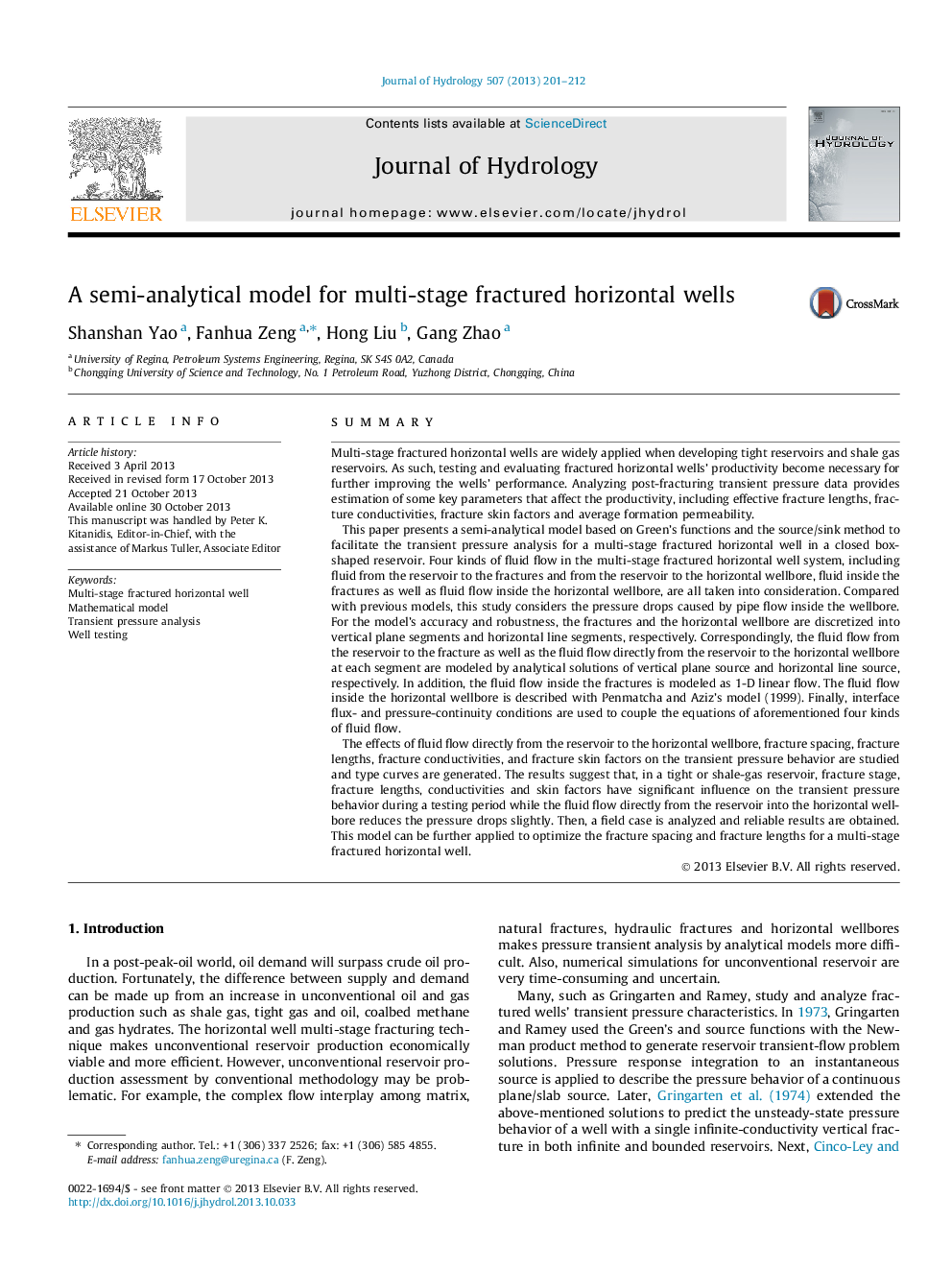| کد مقاله | کد نشریه | سال انتشار | مقاله انگلیسی | نسخه تمام متن |
|---|---|---|---|---|
| 4576132 | 1629941 | 2013 | 12 صفحه PDF | دانلود رایگان |

• A semi-analytical model of fractured horizontal wells and type curves are provided.
• Flow directly from reservoir to the wellbore reduces pressure drop.
• Increase of productivity decreases when creating more hydraulic fractures.
• Natural or induced fractures work as improving hydraulic fractures’ conductivities.
• Type curve matching method is a better candidate for transient pressure analysis.
SummaryMulti-stage fractured horizontal wells are widely applied when developing tight reservoirs and shale gas reservoirs. As such, testing and evaluating fractured horizontal wells’ productivity become necessary for further improving the wells’ performance. Analyzing post-fracturing transient pressure data provides estimation of some key parameters that affect the productivity, including effective fracture lengths, fracture conductivities, fracture skin factors and average formation permeability.This paper presents a semi-analytical model based on Green’s functions and the source/sink method to facilitate the transient pressure analysis for a multi-stage fractured horizontal well in a closed box-shaped reservoir. Four kinds of fluid flow in the multi-stage fractured horizontal well system, including fluid from the reservoir to the fractures and from the reservoir to the horizontal wellbore, fluid inside the fractures as well as fluid flow inside the horizontal wellbore, are all taken into consideration. Compared with previous models, this study considers the pressure drops caused by pipe flow inside the wellbore. For the model’s accuracy and robustness, the fractures and the horizontal wellbore are discretized into vertical plane segments and horizontal line segments, respectively. Correspondingly, the fluid flow from the reservoir to the fracture as well as the fluid flow directly from the reservoir to the horizontal wellbore at each segment are modeled by analytical solutions of vertical plane source and horizontal line source, respectively. In addition, the fluid flow inside the fractures is modeled as 1-D linear flow. The fluid flow inside the horizontal wellbore is described with Penmatcha and Aziz’s model (1999). Finally, interface flux- and pressure-continuity conditions are used to couple the equations of aforementioned four kinds of fluid flow.The effects of fluid flow directly from the reservoir to the horizontal wellbore, fracture spacing, fracture lengths, fracture conductivities, and fracture skin factors on the transient pressure behavior are studied and type curves are generated. The results suggest that, in a tight or shale-gas reservoir, fracture stage, fracture lengths, conductivities and skin factors have significant influence on the transient pressure behavior during a testing period while the fluid flow directly from the reservoir into the horizontal wellbore reduces the pressure drops slightly. Then, a field case is analyzed and reliable results are obtained. This model can be further applied to optimize the fracture spacing and fracture lengths for a multi-stage fractured horizontal well.
Journal: Journal of Hydrology - Volume 507, 12 December 2013, Pages 201–212